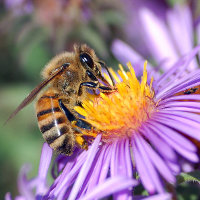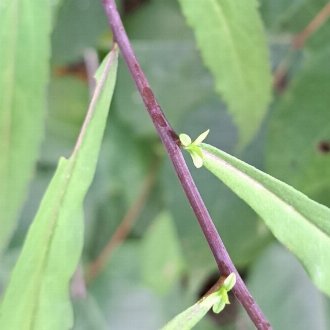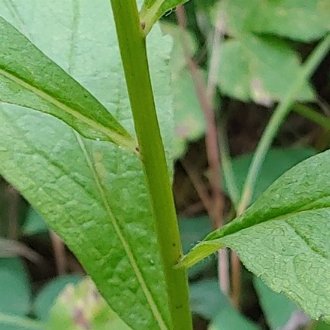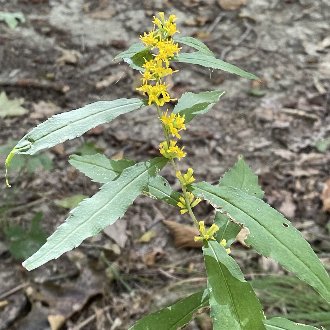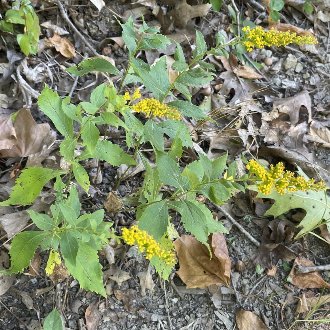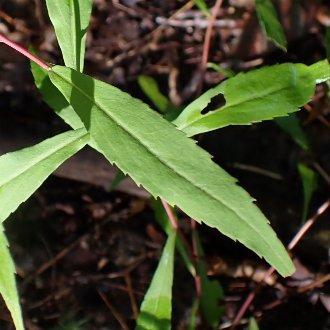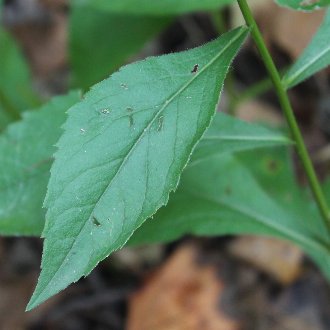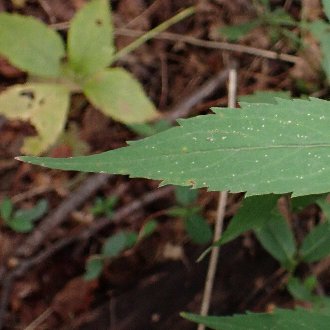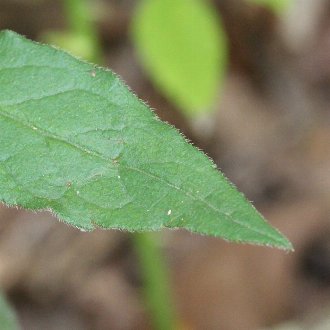Blue-Stemmed Goldenrod vs Elmleaf Goldenrod
This guide is under construction and has not been published yet. It may have errors. When in doubt, double-check other sources for definitive ID.These two goldenrods of open upland woods are often confused. Although S. caesia forms rhizomes, the base of the stems are often woody and resemble the non-rhizomatous habit of S. ulmifolia. Both can have a sprawling habit. They are usually easily told apart by stem texture, leaf dimensions and vein texture, or flowerhead arrangement. S. ulmifolia ranges farther west, is more restricted to calcareous soils, and ranges into moister conditions, whereas S. caesia ranges farther north and southeast, is more tolerant of clay soils, and ranges deeper into shade.
Blue-Stemmed Goldenrod (Solidago caesia) | Elmleaf Goldenrod (Solidago ulmifolia) |
A perennial of upland decidous woodlands, native to Eastern North America. | A perennial of open upland woods, usually on calcareous soils, native to a wide range in Eastern North America. |
Stems are glaucous (covered in a pale waxy coating) and are usually at least somewhat bluish to purple in color, only occasionally pure green. Photo © Bob Schwartz, CC BY 4.0. | Stems are not glaucous, and are usually green. Photo © Ryan Sorrells, CC BY 4.0. |
Although plants often have an inflorescence at the end of each stem, it is smaller, and much of the blooms occur in the axils of upper leaves. Photo © botany08, CC BY 4.0. | Blooms in a well-defined inflorescence at the end of each stem, with no blooms found in the leaf axils. Photo © Sam Kieschnick, CC BY 4.0. |
Leaves average narrower (8-20mm) and longer relative to their width. Leaves have a single, prominent central vein, and most other veins not particularly prominent. Photo © Steven Lamonde, CC BY 4.0. | Leaves average much broader (3-4cm) and more stout. Side-veins are more prominent, often nearly as visible as central vein. Photo © Dominic, CC BY 4.0. |
Leaf tips are acuminate, tapering to a long point. Photo © Sus scrofa, CC BY 4.0. | Leaf tips are acute, forming a simple angle, with less of a taper. Photo © Samuel A. Schmid, CC BY 4.0. |
References & External Resources
These short lists show only links helpful for ID. For a complete list of references and resources also covering other aspects of ecology, visit the links section of the full article on each plant, which is the first entry here.

